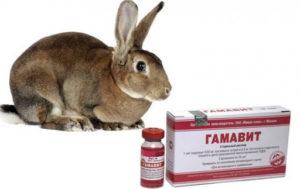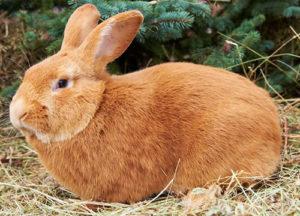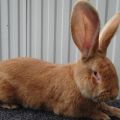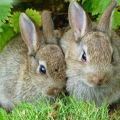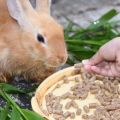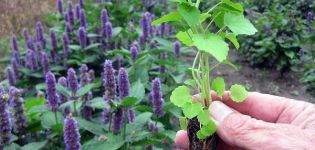Description and characteristics of Hikol rabbits and rules of keeping
Few amateur rabbit breeders know about the hikol rabbit breed, because it was created a quarter of a century ago. But during this time, the animals managed to become popular in Europe and other countries as suitable for professional industrial breeding. Their characteristics are suitable for this particular production method. They belong to early maturing meat breeds with low-fat dietary meat, suitable for baby food.
Origin
These rabbits were bred in France, representatives of the Californian and New Zealand white breeds were used as the basis. For this, genetic work was carried out, that is, the ancestors of the line received artificially introduced genes taken from other producers to improve characteristics.
Description and characteristics
There is no standard for the color of the skin. It can be white, grayish, cream or colorpoint, that is, with a darker shade of ears and nose.
These are large animals with a powerful constitution, wide, solid rear, strong legs, a drooping belly and a light head.
The ears are short, wide, spoon-shaped, the nose is long, the eyes are red with a light edging, widely spaced. They are grown for meat by large agricultural producers.
Advantages of the breed
Rabbits hikol - record holders in the speed of weight gain. At 3-4 months, the weight of the animal reaches 3.5-4.5 kilograms, which refers the breed to the broiler direction. Another significant plus is that hikol meat contains less fat than representatives of other breeds. This makes rabbits especially beneficial for obtaining dietary meat for children with digestive problems and metabolic disorders.
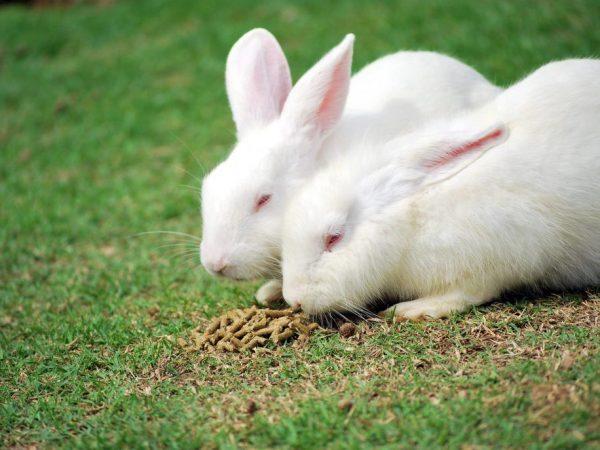
Rabbit meat has high palatability, does not overload the stomach, is easily digested and absorbed quickly. Animal bones weigh less than other breeds, so the net meat yield is higher.
Content
They keep rabbits in cages that need to be cleaned and disinfected regularly. Animals do not tolerate dampness and drafts, so they need to provide the following conditions:
- Providing ventilation.
- Automatic microclimate control system (humidity and temperature level).
- Daylight hours.
- Dispensing feed strictly according to the feeding schedule.
- Use of purified drinking water.
- Availability of timely veterinary examination and carrying out the necessary procedures.
- Regular disinfection, pest control and deratization.
Providing good living conditions for rabbits will bring high returns through excellent meat yield. For large breeding farms and industrial farms, keeping hikol rabbits brings significant returns and stable profits.

The diet
It is unprofitable to breed Hikol rabbits in small farms or household plots, because for intensive weight gain, they must eat special pelleted feed. These products have a balanced formula that allows you to gain weight in a few months.
When using traditional feeding, the main qualities of the breed are lost - early maturity and the speed of reaching slaughter weight.
However, rabbits of this breed have a strong food tract, capable of digesting standard foods for these animals. Their diet includes the following foods:
- Grass.
- Hay.
- Wheat.
- Barley.
- Corn.
- Sunflower.
- Boiled and fresh vegetables.
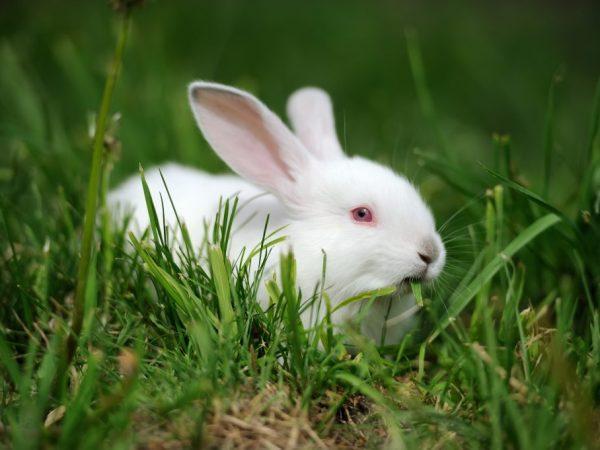
As with other rabbits, it is important for the Hicol breed to provide an uninterrupted supply of clean drinking water. It provides health and appetite for consistent weight gain. A healthy animal is able to gain 45-50 grams of mass per day. Nipple drinking systems are suitable for water supply.
Breeding features
These rabbits are suitable for breeding only on large farms, because, due to the origin of the breed, natural reproduction leads to a distortion of traits. These are hybrids, so artificial insemination will have to be used for the brood. This is the only way to preserve breed characteristics and blood purity.
And this is an expensive process that is not available to most farmers or rabbit breeders.
Diseases and vaccinations
Hikol rabbits are distinguished by healthy digestion and endurance. But all rabbits, without exception, are susceptible to infectious diseases, which can “mow down” a significant livestock in a matter of days and even hours. Therefore, these animals are given preventive and routine vaccinations against myxomatosis and hemorrhagic viral disease. Vaccinations can be combined or given separately.
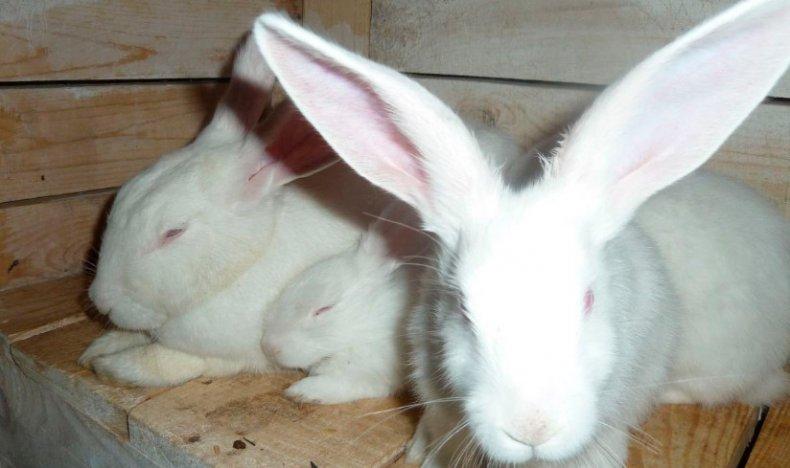
Purchased rabbits are also vaccinated against salmonellosis, listeriosis, rabies and pasteurellosis. If a single-dose vaccine is used, the interval between injections should be two weeks.
Choosing and buying hikol rabbits
Since the breed differs in a number of specific features, in particular, in terms of breeding, rabbits can be bought only in specialized farms and only if the buyer is aware of the difficulties of the upcoming breeding. Hikol rabbits are bought by specialized farms with industrial production volumes. They buy young stock from companies that are engaged in such complex breeding.
Rabbits must be in possession of appropriate passports confirming their origin and health. Externally, the inspection is the same as when buying other rabbits:
- Clean wool without tangles.
- Clear eyes.
- Lack of discharge.
- Cheerful demeanor.
- Stable appetite.
In the Russian Federation, purebred rabbits are bred by a specialized center "HYCOLE". Here you can buy breeding animals with a tattoo on the ear, which guarantees the purity of the breed and belonging to different breeding lines for the absence of closely related origin. This breed of broiler type gives a rapid increase in dietary meat, but is not suitable for the household, suitable for mass, industrial breeding.
